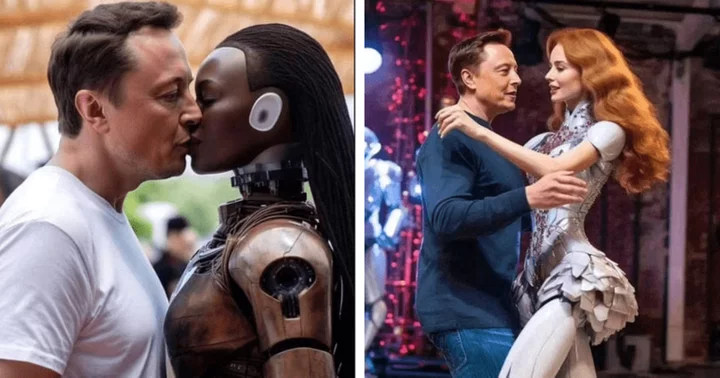
'Who is she?': Elon Musk's bizarre photo leaves Internet confused as it shows him kissing a robot
'Where's the male version? I was always playing to get a robot husband. Does all chores, never argue,' said a social media user
2023-05-23 02:59
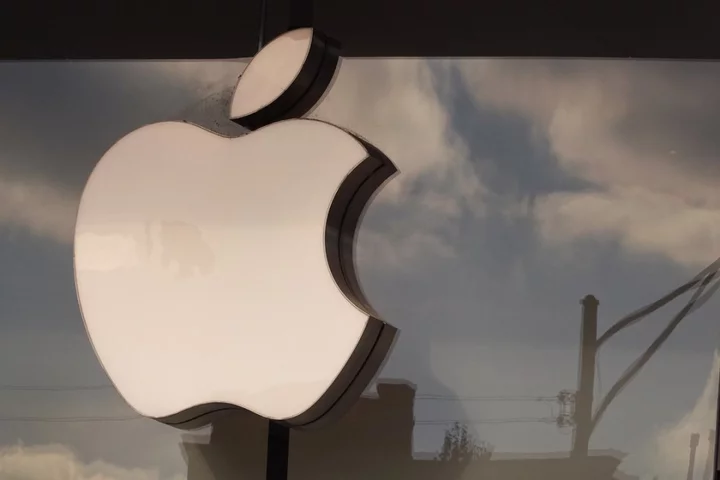
Apple’s ‘mixed reality’ headset: What could the future look like through new VR glasses?
In a couple of weeks, at its annual Worldwide Developers Conference, Apple could be set to reveal one of its most important and risky products ever: a whole new way of seeing the world. The “mixed reality” headset is still a secret and a mystery. Though it has been strongly rumoured, it still might never arrive; it would certainly not be a surprise if it did not turn up at that WWDC event, though it would be something of a disappointment given how many whispers there have been. But whether it arrives now, later or never, Apple’s headset has been in the works for years. And clues to what it might look like – or what the world might look like through it – are already sprinkled through the company’s other products and apps. Rumours of how the headset will look have suggested it might be something like ski goggles, with cameras mounted on the outside and a precise screen on the inside, borrowing some of the design language of the Apple Watch; eventually, that is expected to morph into something less like a virtual reality headset, and more like glasses with a screen that will blend into normal life. We have a lot of clues about what the mixed reality experiences that Apple wants people to see through it will look like. That’s because Apple and its executives have frequently discussed the uses of augmented reality in public, even as the hardware has stayed a tightly protected secret. Apple’s work on a kind of headset is thought to have been ongoing since 2016, though what exactly that headset was rumoured to be has shifted over the years. The main rumours have coalesced since then into work on a “mixed reality” headset: something that would use cameras to show a picture of the real world inside a headset strapped to users face, and sensors and software to overlay virtual objects on that real world. In 2017, Tim Cook spoke to The Independentabout the importance of augmented reality. At that point, he was talking primarily about the iPhone and iPad, and how their cameras, sensors and screens could be used to layer virtual objects on top of the real world. It was clear even then that Apple really planned to include it in some sort of glasses or goggles, however. Asked at the time, Mr Cook pointed to “rumours and stuff about companies working on those” and declined to discuss Apple’s plans, but he said that the “technology itself doesn’t exist to do [devoted hardware] in a quality way”. “The display technology required, as well as putting enough stuff around your face – there’s huge challenges with that,” he said then. “The field of view, the quality of the display itself, it’s not there yet,” he added, saying that Apple doesn’t “give a rat’s about being first” and would not launch anything until it was satisfied. In the time since, Apple has seemingly been working very hard to get satisfied with that technology. It appears to be paying off: last week, virtual reality pioneer Palmer Luckey, who created Oculus and then sold it to Meta, suggested that he had seen an early version of the headset and that it was “so good”. Morsels of unclear and uncertain information like that are all we have to go on about the headset, which has not really been leaked in any definitive form even as rumours suggest it is just weeks from launch. But if the hardware is unknown, Apple’s plans are not so mysterious. That is because Apple may already have been quietly planning for the metaverse – or something like it, given that the company may be unlikely to adopt a term that has been soured both by the mixed reaction to “Web 3.0” and Facebook’s attempt to co-opt it by changing its name to Meta and re-orienting the company around it. Apple will probably avoid much of that branding, since it has quickly become attached to a kind of hype and boosterism that it tends not to associate itself with. It also usually likes to make up its own terms – and recent trademarks have included filings for “xrOS”, which may be the branding for the operating system that powers the headset. But those early experiments in the metaverse do already show some of the ways that Apple might be imagining us interacting with its new headset. The most obvious comparison is with the Oculus headsets that are now developed by Meta. Those have focused more on virtual reality than augmented reality; Meta has been interested in creating whole new digital worlds, rather than overlaying virtual objects on the real world, like Apple seems to be interested in. But the use cases may be the same, and Meta has focused on applications such as business meetings, where people can sit around a real table and discuss things, as well as VR games such as the hugely popular Beat Saber, where people try and strike objects with a sword in time to a beat. Apple has in recent years been more focused on the quality of interactions with devices, and has actually encouraged users to spend less time on their devices and more time being active. As such, it might not opt for mixed reality experiences that leave people cooped up inside the headset, and might instead be more outward-looking. As such, Apple might still focus on meetings, but would presumably use its augmented reality technology to add virtual people onto real rooms, rather than stuffing them in computer-designed spaces. And it might focus more on people’s interactions with the real environment by, for instance, allowing people to see their messages or directions as they move around, a version of which is already experienced by people who wear the Apple Watch. Apple has already offered a host of technologies aimed at making it easier for developers to include augmented reality in their iPhone and iPad apps. In 2017, when Cook made those tantalising comments about a possible headset, he was actually showing off uses of those frameworks: in the app Night Sky, for instance, which overlays virtual images of the constellations on top of real camera views of the stars. The company makes that technology possible with a range of systems, in both its hardware and software. That hardware includes the cameras, of course, but also the LiDAR sensor in some iPhones and iPads that allows for precise scanning of the environment; the software is most obvious in the form of ARKit, which does the heavy lifting of understanding the world around a user so that developers can just place their virtual objects into it. Since then, developers such as Ikea have used that to offer the option to drop virtual furniture into a real room to see how it might fit, for instance. Other apps such as 3D Scanner harness those sensors to allow people to easily create virtual views of those rooms as if they are in a video game. But the most telling way of guessing what Apple’s plans for the headset are can be found in its own technology. Apple has been quietly creating a whole world of apps that appear to be ready for mixed reality, hidden in plain view. One of them is Memoji, which are cartoon versions of people that can be used as stickers to react to messages or as profile pictures within messages. Apple has leaned on them heavily in recent years, using them as decorations in its presentations, for instance. At the moment, they are just a fun picture. But it’s very easy to imagine how they could instantly be used as avatars for people in virtual environments. If people are to participate in virtual meetings through their headsets, then other participants in that meeting will need to appear in some form, and current versions of those environments such as Meta’s Horizon Worlds rely on cartoonish drawings of people rather than realistic depictions. Apple already has those ready to go – many iPhone owners might already have created their virtual avatar, without even realising it. Aside from meetings, one of the most discussed use cases of mixed reality is in finding directions. A person might be walking up to junction, for instance, and see a virtual signal telling them to turn left overlaid on the real road that they need to start walking down. Apple has been putting the foundations of that kind of technology in place for years. It launched Apple Maps in 2012 and in the time since has been working to integrate it with the real world: collecting detailed 3D information about the world, for instance, so that it can show accurate and precise virtual models of real buildings, and a “Look Around” tool introduced in 2019 that works like Google Street View and lets people scroll around three dimensional panoramas. At the moment, those features are used to make people’s phone navigation look nice: as you drive into a city, for instance, the 3D models of buildings shift around, to make it feel like the virtual car on your phone is really driving along. But it takes very little imagination at all to see that the real purpose of those models may be to allow Apple to have a precise understanding of the real world, so that the headset will know where it is and help its wearer. Apple has also already been working on wearable products, which might themselves offer an insight into how the headset will work. The Apple Watch and AirPods already work by attaching themselves to people’s bodies and adding a layer of digital information – which, in a way, is exactly what the headset will aim to do. The AirPods, for instance, have found a way to lightly add information on top of the real world: using Siri to read out messages as they arrive, and adding transparency modes that allow the noises of the real world in as well as the sound coming through the earphones. And the Watch may be a glimpse at how Apple will encourage people to strap a computer to their body in a way that might look alarmingly sci-fi but has become accepted as relatively normal. Apple encouraged the Watch to become an acceptable accoutrement by focusing on personalisation, and designing in a way that brought in a sense of softness that did not make the hardware seem too much like a computer – it will probably do much the same with the headset. Apple’s new products are often described as if they have been magicked up from nowhere. But in truth all of its recent innovations have had their roots in previous products: the iPhone combined an iPod and a computer, and both the iPad and Apple Watch were bigger and smaller versions of that iPhone. The same thing appears to have been happening with Apple’s headset, which might look a lot more familiar than we are expecting. When the company takes to the stage to reveal its new products in a couple of weeks, we might realise that the product Apple wants us to strap to our faces has been developed right under our noses. Read More The 20 technologies that defined the first 20 years of the 21st Century Apple Watch 7 pre-order: How to buy the new smartwatch in the UK Apple introduces new version of Watch with complete redesign iPhone 13 - live: UK contract deals and prices for Apple, EE and O2
2023-05-23 02:20
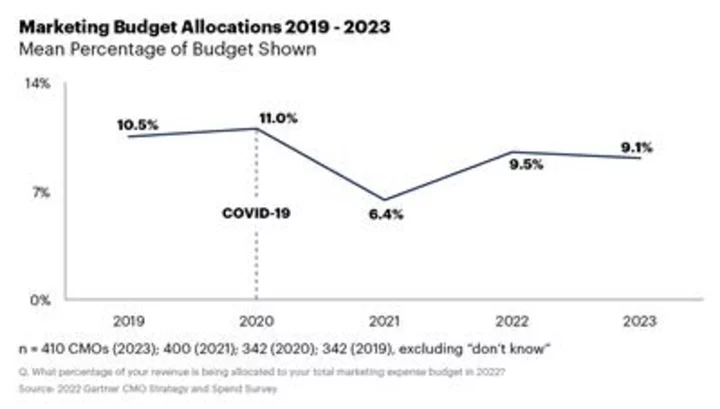
Gartner Survey Reveals 71% of CMOs Believe They Lack Sufficient Budget to Fully Execute Their Strategy in 2023
DENVER--(BUSINESS WIRE)--May 22, 2023--
2023-05-23 01:57

Parents Sue Elite Schools for ‘Indoctrinating’ Their Kids With Anti-Racist Policies
When Jerome Eisenberg enrolled his daughter at the Brentwood School in Los Angeles, where Adam Levine met some
2023-05-23 01:50
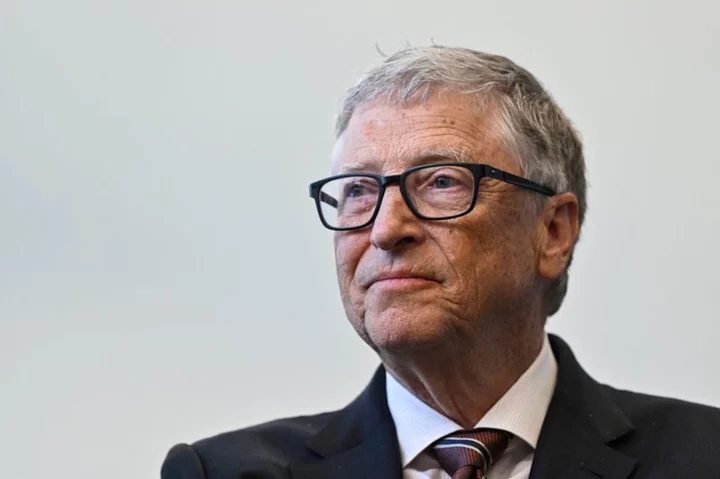
Bill Gates says top AI agent poised to replace search, shopping businesses
SAN FRANCISCO Bill Gates, Microsoft Corp's co-founder, on Monday said the technology race to win is development of
2023-05-23 01:45
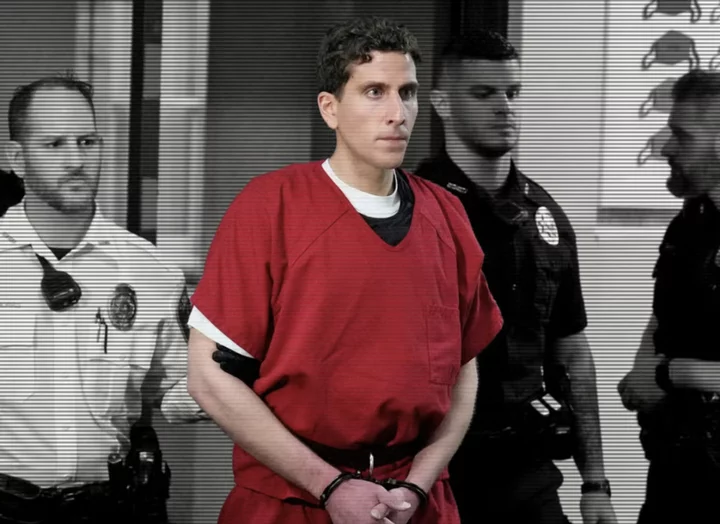
Who is Bryan Kohberger? The criminology graduate being arraigned over the Idaho college murders
Bryan Kohberger became a household name across America when police swooped on his parents’ home in December and arrested him for the brutal murdersof four University of Idaho students. Mr Kohberger, then a PhD criminology student at Washington State University, was accused of stabbing to death Kaylee Goncalves, Madison Mogen, Xana Kernodle and Ethan Chapin in an off-campus student rental home in Moscow, Idaho, on 13 November. The victims’ loved ones and those following developments in the quadruple murder case went from weeks of near-silence from law enforcement to the bombshell news of the accused killer’s arrest six weeks later. Since then, people from Mr Kohberger’s past – though shocked – have built a picture of a bullied loner who overcame addiction. Meanwhile, fellow students from his time just over the Idaho border into Washington describe a criminology zealot who “creeped people out”. With the 28-year-old refusing to enter a plea on four counts of murder and one burglary charge on Monday, The Independent asks: Who really is Bryan Kohberger? Bullying, addiction and weight loss Four years before the vicious murders of four University of Idaho students, the man now headed to trial for allegedly taking their lives was lauded for helping to save another. Mr Kohberger had been working as a part-time security officer for Pleasant Valley School District, where his mother was also employed when a hall monitor – a grandmother – began having trouble breathing and losing consciousness. Security guard Luis Fuentes, according to the Pocono Record, dispatched Mr Kohberger to retrieve the school AED as fellow staffers and emergency personnel attended to their coworker. Disaster was averted – but the incident still made the local paper in small-town Pennsylvania, where Mr Kohberger grew up with his parents, Michael and Maryann, and two sisters, Amanda and Melissa. It would mark one of the few times that Bryan Kohberger’s name would surface online until his arrest. Most of Mr Kohberger’s college courses have focused on criminality and the mind, though careers in education with an emphasis on psychology run in the family. His mother worked as a paraprofessional at Pleasant Valley School District and was beloved by students, by all accounts – the type of woman who tells a former pupil that they can always call her after the death of a parent. Her two daughters, both older than Mr Kohberger, both studied psychology at East Coast schools before finding work in the field. Melissa is a therapist in New Jersey, while Amanda is a counsellor in Pennsylvania. The Kohbergers lived for years in Effort, an unincorporated community in Monroe County with a population of under 2,500 just minutes from Pleasant Valley School District, where the children also graduated from high school. Michael Kohberger was a maintenance worker and the family seemed unremarkable in the quiet community 90 miles north of Philadelphia; Bryan used to mow the neighbours’ lawn. Mr Kohberger was overweight and bullied in high school – then lost 100 pounds in his senior year, and more than just his appearance changed, according to friends. “He was rail thin,” Casey Arntz, who hung around in the same group as Mr Kohberger, told 48 Hours. “It was after that weight loss that a lot of people noticed a huge switch.” She says Mr Kohberger bullied her brother, a member of the same social circle, at times even putting her sibling in chokeholds: “When Bryan would get kinda angry with him, he would gaslight him and get physically aggressive,” she said. Her brother, Thomas, told The Daily Beast that Mr Kohberger liked to point out his “flaws and insecurities” and would do so “all the time.” “He would go after my intelligence,” the 26-year-old said. “He would basically insinuate that I’m kind of slow-witted and that I’m forgetful and [that] I lack the intelligence to be his friend.” That aggressive streak was described by other friends, as well. Nick McLoughlin, 26, attended classes at both Pleasant Valley High School and Monroe Count’s vocational school with Mr Kohberger, telling The Daily Beast the murder suspect had been interested in becoming a police officer and took criminal justice courses. His interest in law enforcement was apparent, one former teacher told the outlet, describing Mr Kohberger as “passionate about criminal justice.” “He was just a regular 12th grader, had a few friends, was a good student,” she said. “I thought he would become a police officer or correctional officer ... He liked to watch movies about police, and ask me the next day if I’d seen it. It was more than a hobby for him, he was always asking questions.” In addition to criminology, Mr Kohberger had a new interest after the weight loss, Mr McLoughlin said: Boxing. “He always wanted to fight somebody,” he said. “He was bullying people. We started cutting him off from our friend group because he was 100 percent a different person.” Mr Kohberger’s changing behaviour included drug abuse, another friend, Bree, told 48 Hours – claiming that he began using heroin. She said that “people were not his strong suit.” “You just saw him becoming more self-destructive,” said Bree. “He really stayed secluded.” Overcoming addiction and interest in criminology In a February interview with the Idaho Statesman, high school friends and acquaintances of Mr Kohberger addressed previous reports that he was bullied because of his weight. They told the newspaper that Mr Kohberger found in marijuana a way to cope with the constant targeting that he suffered as a teenager before he escalated to heroin addiction. “I feel he was looking for validation, and that’s why he fell into that crowd,” Ms Arntz told the Statesman. “And honestly, it’s why he fell into the whole drug scene.” Ms Arntz recalled an instance in which Mr Kohberger asked her to drive him to pick up needles for his aunt because his car had broken down. In reality, Mr Kohberger was buying drugs from a dealer, Ms Arntz claimed. “He literally used me to get it,” she added. “I was freaking out and not happy I had heroin in my car and didn’t even know.” Following high school, however, many believed Mr Kohberger seemed to be doing better. He told Ms Arntz that he went to rehab, according to the Daily Beast, and he earned an associate of arts degree in psychology from Northampton Community College in 2018. “He was telling me that he wanted to get sober, that he was getting sober,” Bree told 48 Hours, “And he wanted to let me know, ‘I’m gonna do better. I’m gonna be better.’” Ms Arntz last saw Mr Kohberger at a wedding in 2017, where she gave him a hug and told him, “You look so good. I’m so proud of you,” she told 48 Hours. Mr Kohberger continued his studies at DeSales University in Center Valley, Pennsylvania, where he graduated in 2020 with a bachelor’s degree in psychology and a master’s in criminal justice last year. Teachers and classmates have described him as bright, focused and nearly obsessive about criminology. Michelle Bolger, an associate professor at DeSales, taught Mr Kohberger and described him as a “great writer” and “brilliant student.” “In my 10 years of teaching, I’ve only recommended two students to a PhD program and he was one of them,” she told the Daily Mail. “He was one of my best students, ever. Everyone is in shock over this.” After Mr Kohberger’s graduation from DeSales, he left Pennsylvania and crossed the country to pursue a PhD at Washington State University (WSU) in Pullman, Washington, just across the state border from the University of Idaho in Moscow. He was also a teaching assistant in WSU’s department of criminal justice and criminology. There, he “sort of creeped people out,” fellow grad student B.K. Norton told The New York Times, describing a quiet, intense demeanour. She also alleged he made comments about the LGBTQ community that made some uncomfortable. “He stared and didn’t talk much, but when he did it was very intelligent and he needed everyone to know he was smart,” Ms Norton said. Another WSU grad student in the programme with Mr Kohberger, Benjamin Roberts, echoed her sentiments about the suspect’s academic arrogance. “He would describe things in the most complicated, perhaps academic way possible,” Mr Roberts told 48 Hours, elaborating: “It was like he was trying to convince people that he knew what he was talking about.” Mr Kohberger lived in an unassuming Pullman apartment complex and, while studying and working as a TA, was also continuing to pursue his dream of working in law enforcement. The affidavit unsealed earlier this year by Idaho courts revealed that Mr Kohberger applied for an internship with the Pullman Police Department. “Kohberger wrote in his essay he had an interest in assisting rural law enforcement agencies with how to better collect and analyze technological data in public safety operations,” the affidavit states. The department did not respond to The Independent’s request regarding whether Mr Kohberger ever got the internship. He was committed, it seems, to thoroughly exploring the inner workings of the criminal mind, posting a survey to Reddit that “asked for participants to provide information to ‘understand how emotions and psychological traits influence decision making when committing a crime,’” the affidavit continues. Mr Kohberger seemed fastidious about his efforts to understand the inner workings of the criminal mind – and reportedly applied that same attitude to his diet. A former aunt told the New York Post that Mr Kohberger’s food regime was “very, very weird” and went “above and beyond being vegan.” Relatives had to “buy new pots and pans because he would not eat from anything that had ever had meat cooked in them,” she said, adding that he seemed “very OCD [obsessive-compulsive disorder].” Allegations of sexism and disciplinary action at WSU Around the time of the murders, Mr Kohberger was facing disciplinary action in his teaching assistant job at WSU. The 29-year-old began working as a teaching assistant in the criminology department in August as part of his graduate program. But within a month he was already under investigation by the university because of “behavioural problems” and a “sexist attitude towards women”, according to NewsNation. Earlier this year, the outlet obtained a detailed timeline of his issues in the department, revealing that Mr Kohberger was warned multiple times about his behaviour and was brought into several meetings with professors due to their concerns. His attitude towards women was cited as a key concern, with the criminal justice student allegedly being “rude to women”, grading the women that he taught differently to the men, and having a “sexist attitude towards females he interacted with at the school”. In his brief four-month stint as a teaching assistant, Mr Kohberger also reportedly got into multiple altercations with one of the professors – Professor John Snyder. The first altercation reportedly took place on 23 September and he was called in to meet the professor to discuss his behaviour on 3 October. But his behaviour only escalated, with reports of him becoming increasingly “feisty”, “belligerent” and getting into arguments with professors in the run-up to the murders. On 21 October, Professor Snyder emailed Mr Kohberger telling him he had failed to meet the expectations he had outlined in their previous discussion. On 2 November – 11 days before the murders – Mr Kohberger reportedly met with the professor to discuss an “improvement plan” for his behaviour. In the aftermath of the slayings, the university continued to note his concerning behaviour. Mr Kohberger attended a meeting with the professor about the improvement plan on 7 December – before getting into yet another altercation with him two days later. The professor condemned his behaviour, writing to the accused killer that it was “apparent that you have not made progress regarding your professionalism”. On 19 December – just over one month on from the murders – Mr Kohberger was ultimately fired from his WSU teaching post, reported NewsNation. Phil Weiler, the vice president at WSU, told The Independent back in February that the university could not discuss a student’s records. “Bryan Kohberger received an appointment as a teaching assistant at Washington State University (WSU) during the fall 2022 semester. It is typical for students to receive a teaching assistantship or similar appointment as part of their PhD program,” he said in a statement. “Mr Kohberger does not currently have a teaching assistantship and he is not currently enrolled at WSU. “Information concerning a student’s teaching assistantship is considered a student record. The federal Family Educational Rights and Privacy Act (FERPA) prevents universities from discussing student records. As a result, I am unable to comment on Mr Kohberger’s experience as a teaching assistant.” Aftermath of the murders Following the murders, classmates said Mr Kohberger continued attending classes – but “seemed more upbeat and willing to carry a conversation,” Ms Norton told the Times. In mid-December, Mr Kohberger then drove cross-country with his father in his white Hyundai Elantra, getting stopped twice in Indiana, before returning to his parents’ home in Pennsylvania. He was arrested there on 30 December and extradited to Moscow to face charges. His lawyers have claimed Mr Kohberger is innocent and wants to clear his name. His family released a statement expressing their condolences to the victims’ families while urging a presumption of innocence on part of their son. Many in Mr Kohberger’s orbit expressed shock at his alleged involvement in the crime; others from his past were not so sure. “He was mean-spirited,” Thomas Arntz told the Daily Beast. “He was a bully. I never thought he would do something like that, but at the same time it doesn’t really surprise me.” On Monday (19 May), Mr Kohberger refused to enter a plea in Latah County District Court, with his attorney saying that he was “standing silent” on the charges. The unusual response prompted the judge to enter a “not guilty” plea on Mr Kohberger’s behalf, setting the stage for a trial in which he could potentially face the death penalty. Read More Bryan Kohberger arraignment – live: Idaho college murders suspect to appear in court and enter plea on charges Four students stabbed to death, a weeks-long manhunt and still no motive: What we know about the Idaho murders Kaylee Goncalves’ father thanks roommates who survived Idaho murders for helping in Bryan Kohberger case
2023-05-23 01:22

FourKites Named a Leader in the 2023 Gartner® Magic Quadrant™ for Third Consecutive Year
AMSTERDAM--(BUSINESS WIRE)--May 22, 2023--
2023-05-23 00:59

Biden to nominate Democrat for key seat on US telecom regulator
By David Shepardson WASHINGTON President Joe Biden on Monday said he plans to nominate attorney Anna Gomez for
2023-05-23 00:51
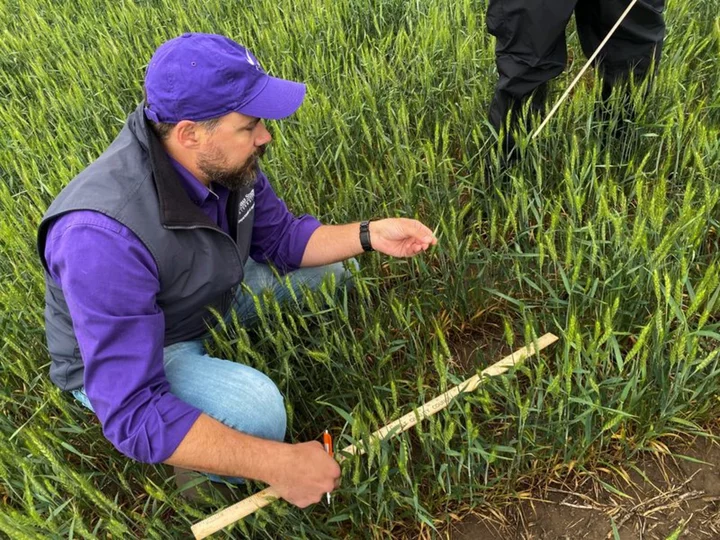
Kansas farmers abandon wheat fields after extreme drought
By Tom Polansek WICHITA, Kansas Farmers in Kansas, the biggest U.S. producer of wheat used to make bread,
2023-05-23 00:49

Intel’s Broad, Open HPC+AI Portfolio Powers Performance, Generative AI for Science
HAMBURG, Germany--(BUSINESS WIRE)--May 22, 2023--
2023-05-23 00:49

New SpaceX flight just made history thanks to its passengers
SpaceX's second private flight just made history by sending Saudi Arabia's first female astronaut towards the International Space Station. The SpaceX Falcon rocket launched from NASA's Kennedy Space Centre on Sunday night, and the astronaut and the other three passengers are expected to reach the space station in their capsule on Monday, where they will hang out for just over a week. Saudi Arabia's first astronauts in decades are stem cell researcher Rayyanah Barnawi, and Royal Saudi Air Force fighter pilot Ali al Qarni. "This is a dream come true for everyone," Barnawi said before the flight. Sign up to our free Indy100 weekly newsletter "Just being able to understand that this is possible - if me and Ali can do it, then they can do it, too." The journey was organised by Houston-based Axiom Space and the crew was led by Peggy Whitson, a former NASA astronaut who holds the US record for the most accumulated time in space - 665 days and counting. The company would not reveal how much the latest tickets cost, but previously cited per-seat prices of $55m (£44m). Have your say in our news democracy. Click the upvote icon at the top of the page to help raise this article through the indy100 rankings.
2023-05-23 00:26

Mexcian girl who was bullied at school has a higher IQ than Einstein and Stephen Hawking
A young girl who was bullied for being autistic may have a higher IQ than Stephen Hawking or Albert Einstein. Adhara Maite Pérez Sánchez, an 11-year-old from Tláhuac, Mexico, is being described as a prodigy by many after recently graduating with a degree in Systems Engineering. She is now going on to study industrial engineering. The extraordinary girl has a passion for astronomy and space, expressing the dream to become the first Mexican woman to travel to space as an astronaut and has given talks about her interest and knowledge of aerospace. She intends to become an astronaut at NASA, and is currently taking courses in astronomy and gravitational waves at the National Autonomous University of Mexico (UNAM), which is widely regarded as a top research university. Sign up to our free Indy100 weekly newsletter Adhara has also had her achievements recognised in 2021 by the Senate of the Republic, as well as being declared one of Mexico’s 100 most influential women, and appearing on the cover Marie Claire Mexico. However, life hasn’t always been easy for Adhara, who struggled with being bullied by her classmates. Often labelled as a ‘weirdo’ for her autism. Adhara was diagnosed with Asperger’s at 3 years old, but has succeeded greatly with it. Recently she has begun developing a bracelet designed to monitor the emotions of children such as herself in order to improve their communication skills. But she hasn’t let the negativity bring her down. Determined to succeed and achieve her goals in spite of what others say about her. Her inspirations include late physicist, Stephen Hawking, and Carmen Félix, a Mexican engineer currently developing a plan to launch a manned mission to Mars. Have your say in our news democracy. Click the upvote icon at the top of the page to help raise this article through the indy100 rankings.
2023-05-23 00:25
